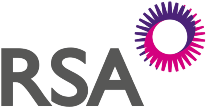Personal Injury ATE Insurance – FAQ’s
We add your questions about ATE/litigation insurance to our website – the latest ones are at the top.
Qualified One-Way Costs Shifting (QOCS) was introduced to remove liability for opponents’ costs from the claimant in the event they lose their injury or clinical negligence case. It does not provide protection from failure to beat a ‘Part 36’ offer.
Our ATE insurance cover protects claimants from the liability to pay opponents’ costs from the date of the ‘Part 36’ offer up to and including the trial.
ATE insurance also pays one’s own disbursements that have been incurred as a result of having to pursue the claim such as Court fees and expert fees etc.
This means that more than just the risk of paying the other sides fees can be off set. Clients can also offset some of the risk in terms of their own capital.
Since April 2013, the law on paying for insurance premiums was changed. Previously premiums were fully paid for by the defendant. However, since the law was changed, the premium is now payable from the damages recovered.
ATE provides numerous benefits to clients wishing to pursue a legal action. These include, but are not limited to:
- Cover of up to 250k.
- Obtained via TOPS, so avoiding wasted time and cost.
- Fully deferred premium contingent upon success.
- Premium not payable in the event of an unsuccessful claim.
- Retrospective cover to the date of the retainer.
- Competitively priced premium.
- Claims can be pursued to their fullest extent.
- Removes the risk of having to pay the opponents legal costs if the dispute is pursued unsuccessfully.
- Can provide protection from interim costs orders.

